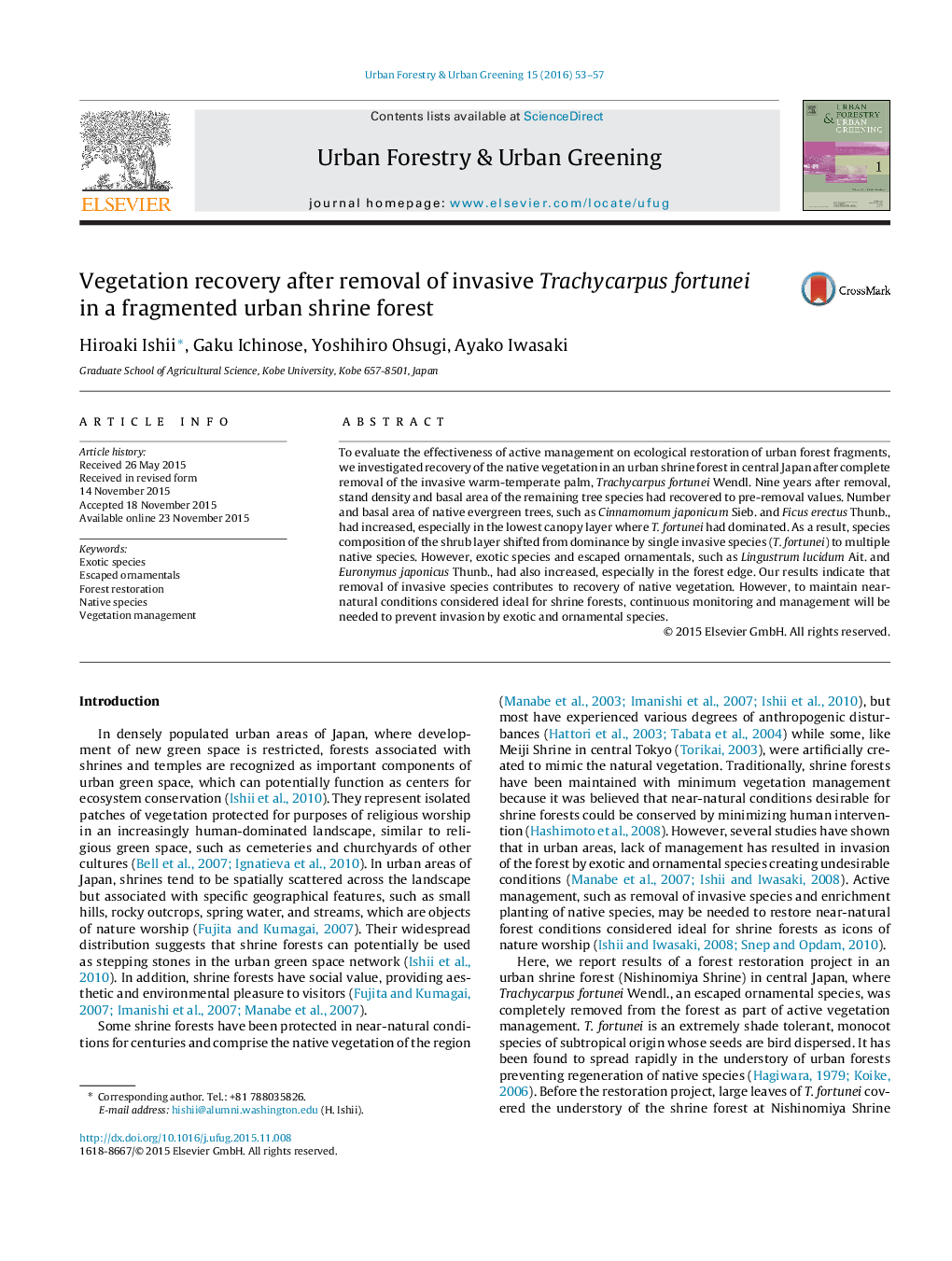| کد مقاله | کد نشریه | سال انتشار | مقاله انگلیسی | نسخه تمام متن |
|---|---|---|---|---|
| 93967 | 160242 | 2016 | 5 صفحه PDF | دانلود رایگان |
• We investigated vegetation recovery in an urban shrine forest in central Japan after complete removal of the invasive palm, Trachycarpus fortunei Wendl.
• Nine years after removal, stand density and basal area of the remaining trees had recovered to pre-removal values.
• Species composition of the shrub layer shifted from dominance by single invasive species (T. fortunei) to multiple native species.
• However, invasive exotic species and escaped ornamentals, such as Lingustrum lucidum Ait. and Euronymus japonicus Thunb., had also increased, especially in the forest edge.
• While removal of invasive species contributes to recovery of native vegetation, to maintain near-natural conditions considered ideal for shrine forests, continuous monitoring and management will be needed to prevent invasion by exotic and ornamental species.
To evaluate the effectiveness of active management on ecological restoration of urban forest fragments, we investigated recovery of the native vegetation in an urban shrine forest in central Japan after complete removal of the invasive warm-temperate palm, Trachycarpus fortunei Wendl. Nine years after removal, stand density and basal area of the remaining tree species had recovered to pre-removal values. Number and basal area of native evergreen trees, such as Cinnamomum japonicum Sieb. and Ficus erectus Thunb., had increased, especially in the lowest canopy layer where T. fortunei had dominated. As a result, species composition of the shrub layer shifted from dominance by single invasive species (T. fortunei) to multiple native species. However, exotic species and escaped ornamentals, such as Lingustrum lucidum Ait. and Euronymus japonicus Thunb., had also increased, especially in the forest edge. Our results indicate that removal of invasive species contributes to recovery of native vegetation. However, to maintain near-natural conditions considered ideal for shrine forests, continuous monitoring and management will be needed to prevent invasion by exotic and ornamental species.
Journal: Urban Forestry & Urban Greening - Volume 15, 2016, Pages 53–57
